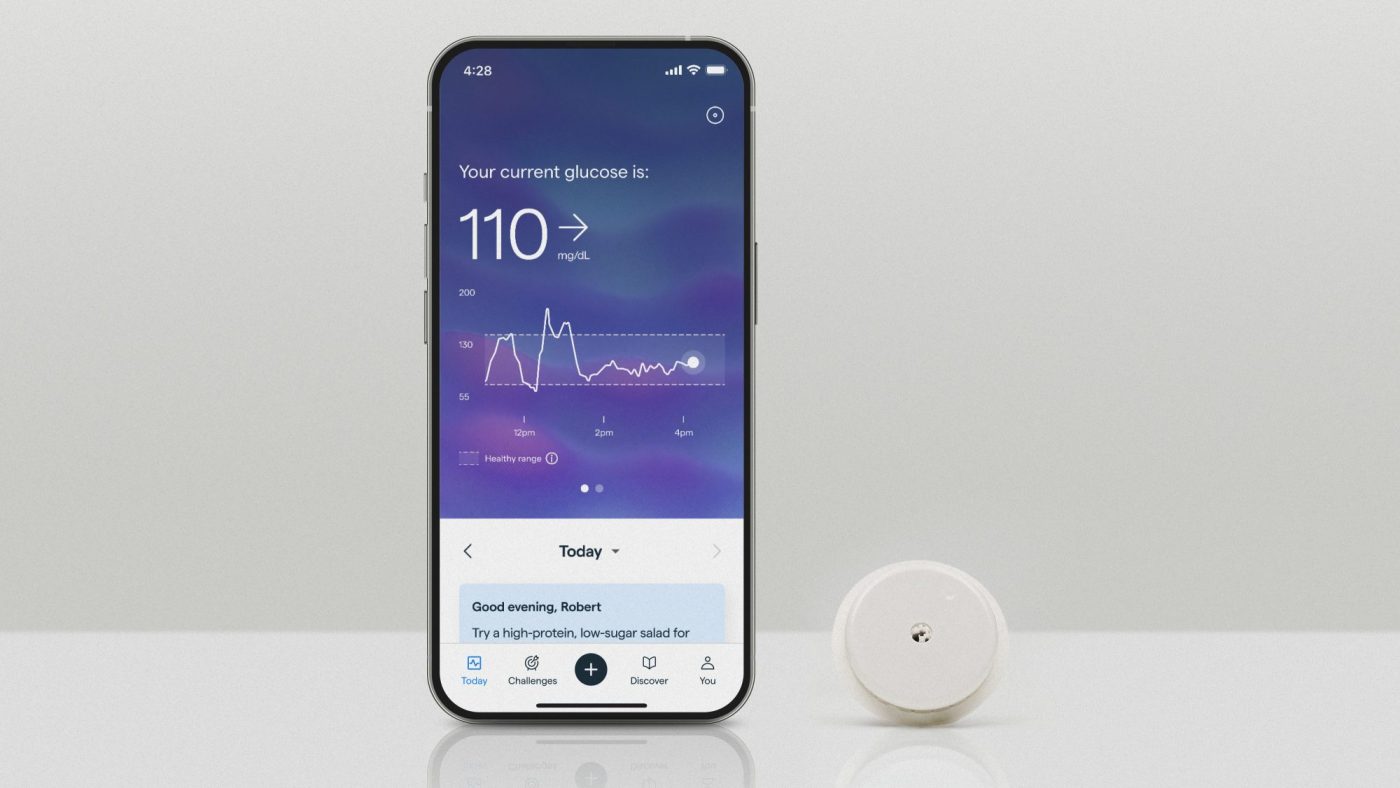
Will glucose monitors become the next wellness accessory?
In recent years, smartwatches and smart rings have grown increasingly popular, adorning the wrists and fingers of consumers who use them to monitor their exercise, sleep and heart activity.
Now, medical device companies, including north suburban-based Abbott Laboratories, are hoping health enthusiasts will embrace a new type of wellness accessory: wearable sensors to track glucose levels.
Unlike previous, similar devices, the new ones don’t require prescriptions and aren’t just for diabetics. Abbott’s new device, called Lingo, is geared toward people who don’t have diabetes but want to see how food and activity affect their glucose levels, and how that might be connected to their mood, energy level and sleep quality.
Abbott says it’s the next frontier in wearable health technology, though questions remain about whether people will pay for it. Doctors also caution that it’s too early to say whether the devices will improve the long-term health of those who wear them.
“I think people have been waiting for these technologies to be over the counter, without a prescription, for a long time,” said Pam Nisevich Bede, Abbott’s head of nutrition for Lingo. “Glucose matters in all individuals. It definitely links to how we’re feeling in the short term.”
Abbott’s Lingo biosensor resembles a quarter-size disc that can be worn on the back of the upper arm to monitor glucose in the body’s interstitial fluid, which is the fluid in between the cells, under the skin. Interstitial fluid absorbs glucose after it enters a person’s bloodstream.
The Lingo has a tiny filament, about the length of an eyelash, that sits just beneath the skin to measure glucose. Users can then see their glucose levels on an app on their phones, as well as use the app to log meals, exercise and receive personalized recommendations.
The device is similar to Abbott’s FreeStyle Libre, which people with diabetes have been using for years to track their glucose levels.
Each disc remains on the arm for 14 days before it must be replaced with a new one. Abbott is selling one Lingo sensor, lasting two weeks, for $49, two sensors lasting four weeks for $89 and six sensors lasting 12 weeks for $249.
Abbott competitor Dexcom also released a similar device for nondiabetics and diabetics who don’t take insulin over the summer called Stelo. Dexcom is selling its device for $99 for a one-month supply or $89 a month with a subscription.
Health insurance will not cover the over-the-counter devices.
With the devices, Abbott and Dexcom are growing beyond the $26 billion diabetes devices market and into the market for wearable wellness devices. With Lingo, Abbott hopes to expand its sensor technology into “what is probably the larger market, which is people that don’t have diabetes,” said Robert Ford, Abbott chairman and CEO, during a July earnings call.
“It really represents a bigger pivot into this wellness pace … into broader metabolic health,” said Tom Kawalec, global life sciences medtech lead at Accenture in Chicago.
But first, people have to buy the devices.
“You’ve got to think about who can afford $89 or $99 a month,” Kawalec said. “That’s kind of a big bite for a lot of the population.”
Not everyone who might benefit from the devices will be able to afford them, raising questions about health equity, said Dr. Natalie Cameron, an instructor of general internal medicine at Northwestern University Feinberg School of Medicine and a primary care doctor at Northwestern Medicine.
“Communities with poor access to health care, and who might have poor access to food and maybe some of the communities that need these tools the most, if it’s not affordable, we can’t get it to them,” Cameron said.
Questions also remain about how useful the devices will be for people without diabetes.
A number of studies show that continuous glucose monitors have potential benefits for people without diabetes, but it’s still unclear whether they improve health long term.
Dr. Falguni Vasa, chair of endocrinology at Duly Health and Care, believes the devices can play a role in helping people to be proactive about their health. They could be especially helpful for people with prediabetes, which is when people have blood sugar levels that are higher than normal but not yet in the diabetic range, she said.
“By identifying spikes, it gives them an opportunity to be a little more proactive with food choices and other lifestyle habits,” Vasa said. People might notice, for example, that their glucose spikes after eating certain types of foods, or drops when they go for a walk.
That’s how continuous glucose monitors have helped Larry Colen, who said he’s been wearing Dexcom’s new, over-the-counter device for a few weeks.
When he was first diagnosed with prediabetes about a decade ago, he measured his glucose levels by pricking his finger. But he felt there were too many gaps in the information he gained from doing that, and he didn’t appreciate the soreness in his fingertips.
Continuous glucose monitoring devices have helped him stick to a healthy diet by providing frequent, real-time feedback, he said.
“When I don’t see how badly a particular cheat meal affects me, it’s a lot easier to rationalize them,” said Colen, 64, of Riverside, California, in an email.
He said he wishes the technology had been available decades ago.
“I honestly feel that if everybody, at risk or not, wore one for a couple of weeks once a year starting at 40, and earlier for those at risk, thousands, or millions, of people would have the opportunity to change their lifestyle and prevent diabetes from becoming a problem rather than dealing with it after the fact,” Colen wrote.
Still, Vasa cautioned, “Right now there’s certainly no (evidence) that shows that putting these sensors on people will, in the long term, prevent the onset of diabetes.”
Northwestern’s Cameron also worries that the devices could cause some people to experience unnecessary anxiety about their health.
“For a limited amount of time, it might be helpful to increase awareness, but too much measuring may make already healthy people anxious,” she said.
Still, she believes that, overall, the monitors could be helpful, noting that she herself has used devices such as a Fitbit to watch her step counts and stay on track with her own health.
“I do think having something monitoring really does help and it’s helped some of the patients I’ve seen,” Cameron said. “There’s a lot of potential to improve health and educate people on what is healthy and when to contact their doctors.”


